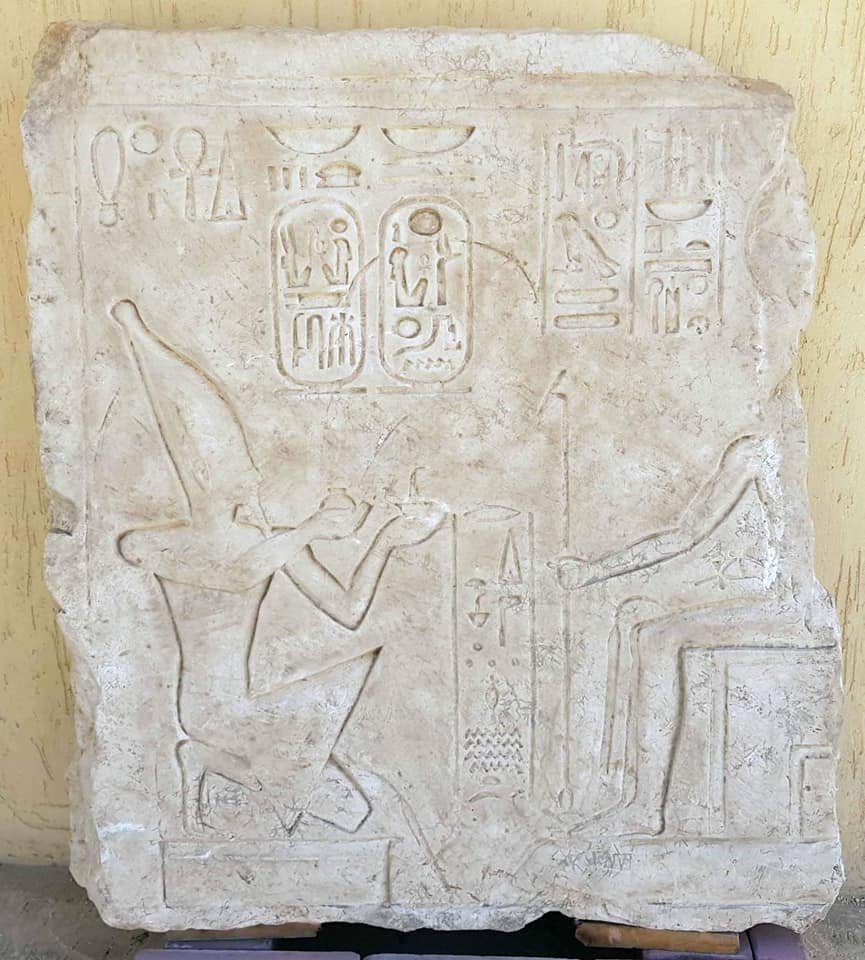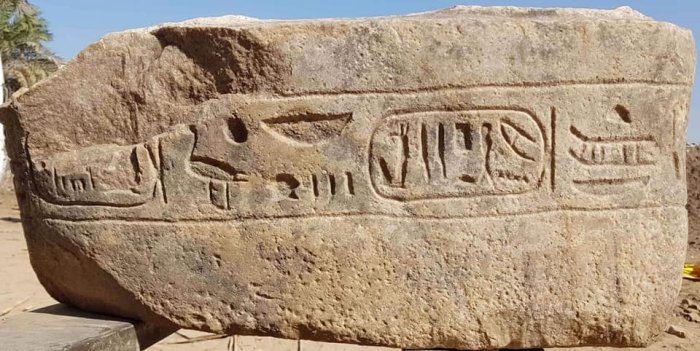Conny Waters – MessageToEagle.com – A number of fragments of royal colossi and a huge mud-brick wall from the New Kingdom have been unearthed at Heliopolis Temple in Matariya, by an Egyptian-German team of archaeologists from the Georg Steindorff Egyptian Museum of the University of Leipzig, and the Applied Sciences Mainz University.

The team excavated a small graveyard (discovered in April 2019) and dated to the 11th century. The site of excavation is located in the southwestern sector of the precinct.
According to Aymen Ashmawi, head of the ancient Egyptian Antiquities Department, large layers of debris close to an enclosure wall from the New Kingdom contained fragments of a Middle Kingdom royal statuary as well as a variety of moulds for the manufacturing of faience amulets and fragments of reused capitals of palm columns dating to the Old Kingdom.
“It came as a surprise that these layers directly overlay a stratum of the prehistoric settlement of Heliopolis,” Ashmawi told Ahram Online.
Three trenches yielded evidence of very early mud-brick architecture as well as a type of brewery known from Tell Farkha and other sites.

They also included numerous lithic artifacts and pottery from the transitional period from the Lower Egyptian culture, which show signs of contact with the Naqada Culture of Upper Egypt around 3500 BCE.
Close to the section of the workshop area dating from the 7th – 2nd century BCE was a portion of a paved street discovered about 1m below groundwater, according to the head of the mission, Ditrich Raw.
The pottery finds are believed to be dated to the Third Intermediate Period (c. 1069 BC – c. 664 BC).
Archaeologists also found a number of later Hellenistic-early Roman pits were also found.
Two of them contained debris from temple reliefs of Ramses II. An especially well-preserved slab depicts King Ramses II kneeling in front of the sun god Ra-Horakhty, who during the Fifth Dynasty in the 25th and 24th centuries BC, had become one of the most important gods in ancient Egyptian religion.
He was believed to rule in all parts of the created world: the sky, the Earth, and the underworld. He was the god of the sun, order, kings, and the sky, and the ruler of Heliopolis. He was portrayed as a falcon and shared characteristics with the sky god Horus. At times the two deities were merged as Ra-Horakhty, “Ra, who is Horus of the Two Horizons”.
In the New Kingdom, when the god Amun rose to prominence he was fused with Ra into Amun-Ra.
At the site’s third pit, the team unearthed a number of fragments of two royal sculptures. One of them is the base of a brown quartzite statue of King Seti II (1200 – 1194), who ascended the throne after his father Merneptah, the fourth pharaoh of the Nineteenth Dynasty of Ancient Egypt. King Seti ruled during a difficult period known for dynastic intrigue and short reigns.
The second royal sculpture is carved in red granite and depicts either the goddess Isis or Hathor or a queen of Ramses II.
Written by Conny Waters – MessageToEagle.com – AncientPages.com Staff Writer






